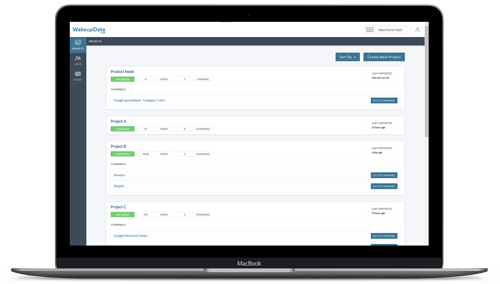Prepare for big events and product launches
Posted on November 2, 2022 (Last Updated: May 29, 2024)
When launching new products, even when you do your best to start preparation on time and without missing deadlines, somehow it always becomes stressful and rushed towards the big date, doesn’t it?
Fear no more, let us share some tips from Google on how to become a pro at keeping everything under control for your next event or product launch.
.png?width=1200&height=400&name=BigLaunchIntext%20(1).png)
Step 1 - Product data & Merchant Center
Have you provided the new feed/product data at least 3-5 business days prior to the launch?
Remember, it can take up to 72 hours for your feed to be crawled after it has been submitted for an initial review.
Have you made sure to provide all necessary product data and that they comply with requirements?
Watch out for ID, title, description, link, image link, price, availability, shipping, GTIN requirements. It could cause a major headache if your products got disapproved due to a mistake in these fields. Also, do not forget that promotional texts are not allowed in titles and images. As a safety net, you could enable automatic item updates to minimize the risk of disapproval when the price or availability have a mismatch in feed and landing page.
Do you have enough product capacities in your merchant center account?
If you come across a warning about exceeding account capacity, you can request additional quota via this form.
Have you uploaded your special event logo 2-3 days in advance?
All logos await review before they can go live. Make sure to comply with the logo policy, and if you leave enough time for the approval process, you have nothing to worry about.
Have you tested your Merchant Promotions and submitted 24+ hours before the launch?
Promotions are usually reviewed within 12 hours after uploading, but practice shows that it can take longer during peak times.
Pro tip: If you are struggling to optimize your product data, you can get a free product feed audit from WakeupData.
Step 2 - Website Tips
Have you made sure content on your landing page is consistent for all locations?
Do not change the site content based on IP, locations, browsers, devices, cookies, etc. Instead, consider using stable LP for shopping ads.
Have you checked Googlebot crawling capabilities?
You need to be sure your robots.txt file is set up correctly. If Google can’t crawl the page or image, your items will not be eligible to show.
Have you ensured you are not restricting your crawl rate?
In Google Search Console, if you have limited the rate at which Google crawls your site, Google may have trouble crawling your images and landing page. Set the Googlebot crawl rate to “Let Google optimize for my site”.
Are you confident your site/server has enough capacity to handle high volume of traffic?
If your site is down or timed out, your items will be disapproved which will result in loss of revenue and many annoyed customers. If you’re not sure, contact your webmaster or use the Page speed Insights tool to check your site loading speed.
Avoid sudden structural changes to your site
Do not move the location of price information within the source code of landing pages, and avoid using JavaScript or other animations to display prices or price reductions. As Google crawls your landing page for price and availability if it comes across such changes, you might experience product disapprovals.
Step 3 - Campaigns & Ads
Have you selected the desired products to serve?
As in so many cases, less is sometimes more. Consider featuring products that stand out from the rest of your inventory for some reason. Consider criteria like products with the highest margins, or products where you have a competitive advantage over similar companies.
Have you set the correct campaign launch date and priority?
Having the correct priority among campaigns is key. Remember, lower priority campaigns will only start bidding if the highest priority campaign runs out of budget.
Have you set the desired budget and bidding?
Keep in mind that jumping into the unknown when stakes are high is not always the best decision. If you are planning to implement changes to your strategy, it might make sense to experiment prior to the big date. For instance, smart bidding strategies take a couple of days to learn and optimize. Aggressive adjustments could be risky. Using a good feed management tool can definitely bring your time to market down.
We hope you found this summary helpful, and that it can serve you well during future launches. If you’d like to learn more about optimisation in Google Merchant Center, give our blogpost Feed management in Google Merchant Center - and beyond a read.
Stay efficient!



